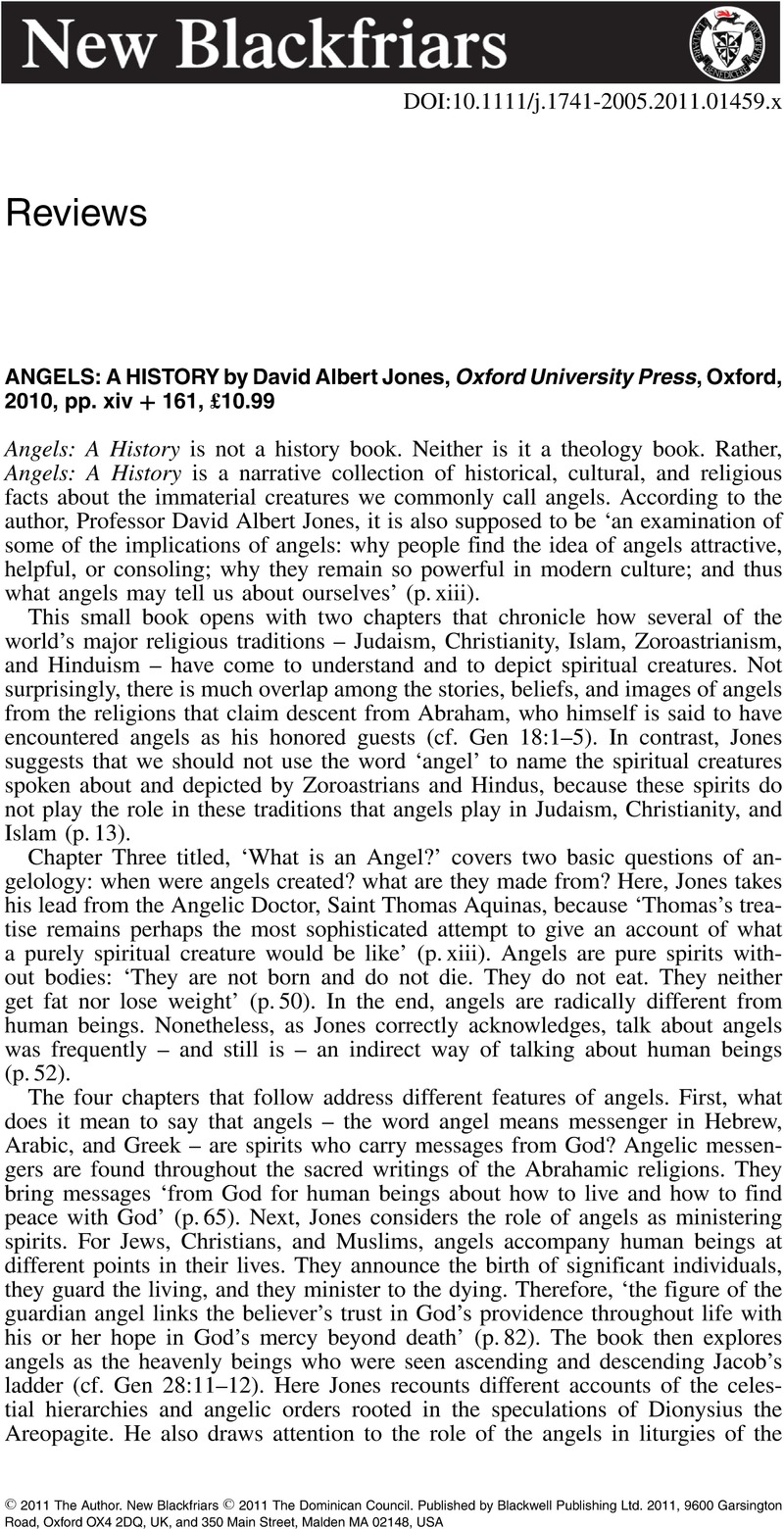No CrossRef data available.
Article contents
Angels: A History by David Albert Jones, Oxford University Press, Oxford, 2010, pp. xiv + 161, £10.99
Review products
Angels: A History by David Albert Jones, Oxford University Press, Oxford, 2010, pp. xiv + 161, £10.99
Published online by Cambridge University Press: 01 January 2024
Abstract
An abstract is not available for this content so a preview has been provided. Please use the Get access link above for information on how to access this content.

Information
- Type
- Reviews
- Information
- Copyright
- Copyright © 2011 The Author. New Blackfriars

